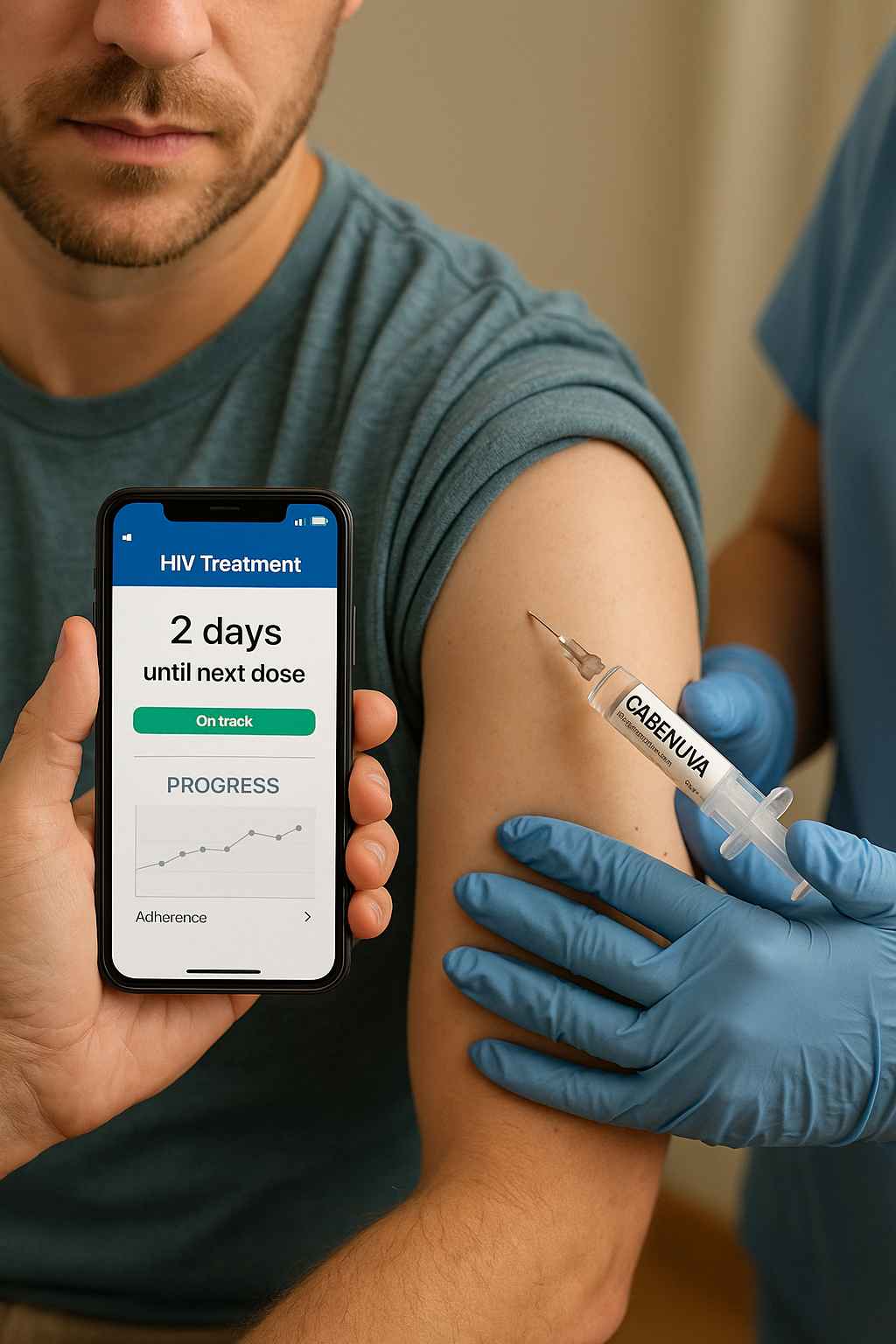
What if managing HIV was as effortless as taking a vitamin once a year? While that vision isn’t quite reality—yet—HIV treatment and trends in 2025 are closer than ever to making care more effective, accessible, and personalized. Today’s advancements are not just about survival. They’re about quality of life, global access, and long-term health equity.
In this article, we’ll explore how antiretroviral therapies are evolving, what’s new in long-acting and injectable treatments, how digital health tools support patient care, and where the future of HIV care is headed. Whether you’re newly diagnosed or supporting someone who is, understanding the latest developments can empower smarter decisions and better health outcomes.
Table of Contents
- Advances in Antiretroviral Therapy
- The Rise of Long-Acting Injectables
- Digital Health and Personalized Care
- Looking Ahead: The Future of HIV Treatment
Advances in Antiretroviral Therapy
HIV treatment in 2025 remains grounded in antiretroviral therapy (ART), the gold standard for managing the virus. But the drugs we use and how we use them have evolved significantly over the past decade.
Oral ART regimens like Biktarvy (bictegravir/emtricitabine/tenofovir alafenamide) and Dovato (dolutegravir/lamivudine) continue to offer high levels of viral suppression with fewer side effects. Newer combinations are more forgiving, with lower pill burdens and improved tolerability. Many patients can now achieve undetectable status with just one pill a day.
The latest trend in ART includes fixed-dose combinations and dual therapy options that aim to reduce toxicity and enhance long-term adherence. These streamlined regimens are particularly beneficial for aging individuals with comorbidities like cardiovascular disease or renal concerns.
Moreover, researchers are exploring the potential of broadly neutralizing antibodies (bNAbs) as adjuncts to ART. These are not yet mainstream but could revolutionize treatment by targeting the virus in ways traditional medications cannot. To stay up-to-date with news on new drug approvals and studies, AIDS.org offers regularly updated insights and resources.
The Rise of Long-Acting Injectables
For many patients, daily medication is a challenge due to stigma, forgetfulness, or lifestyle. That’s where long-acting injectables come in—and in 2025, they are becoming a cornerstone of HIV treatment and trends.
Cabenuva, a combination of cabotegravir and rilpivirine, is administered once a month (and in some cases every two months). This shift means that instead of managing pills daily, patients can receive just six to twelve injections a year. It’s a huge win for convenience and discretion.
Recent innovations have even pushed this model further. Researchers are testing six-month formulations and implantable drug delivery systems, aiming to give patients complete freedom from daily routines. These tools are not only easier to manage but also support better adherence, especially among younger people and those in marginalized communities.
This transformation in treatment delivery directly supports the global effort toward “U=U” (Undetectable = Untransmittable). When viral loads are suppressed through consistent treatment, HIV becomes untransmittable to sexual partners—one of the most powerful public health messages of the decade.
If you’re considering a long-acting injectable, consult with a healthcare provider through platforms like Healthcare.pro to evaluate your eligibility and preferences.
Digital Health and Personalized Care
In 2025, the digital health revolution is no longer emerging—it’s here. From AI-powered chatbots to wearable adherence reminders, tech is now an essential part of HIV treatment and trends.
Telemedicine has become a standard offering at most clinics, especially for routine follow-ups and counseling. Apps like MyChart, PositiveLinks, and Care4Today help patients manage appointments, view lab results, and refill prescriptions—all from their smartphones.
Some tools go even further. Artificial intelligence is being used to predict non-adherence based on patient behavior and recommend interventions. Smart pillboxes and text reminders have reduced missed doses dramatically in trial populations.
These technologies are especially useful for patients in rural areas, where clinic visits are difficult. They also empower patients to take control of their health with real-time data, fostering trust and improving outcomes.
While digital health alone won’t close all care gaps, it plays a crucial role in making HIV treatment more proactive, accessible, and tailored to individual needs.
Looking Ahead: The Future of HIV Treatment
The future of HIV care is being shaped by groundbreaking science and a commitment to global equity. One promising area of research is the development of therapeutic vaccines. Unlike preventative vaccines, these would work alongside ART to enhance the immune system’s ability to suppress HIV without daily medication.
Another exciting development involves CRISPR gene editing, which could one day remove HIV DNA from infected cells. Though still in early-stage research, this holds the long-term promise of a functional cure.
On a more immediate front, health equity initiatives are working to reduce the treatment gap in low-income and underserved communities. While high-income countries benefit from the latest injectable therapies, millions worldwide still lack access to basic ART.
To bridge this divide, organizations are investing in community-based care models, mobile treatment clinics, and national PrEP and ART programs. These initiatives aim to ensure that innovation in HIV treatment translates into real-world access for everyone, not just those in developed healthcare systems.
Conclusion
The state of HIV treatment and trends in 2025 reflects extraordinary progress—both in the lab and on the ground. From once-daily pills to bi-monthly injections, from predictive health apps to gene-editing research, the tools available to manage HIV are more powerful and personalized than ever.
Yet, with these advances comes responsibility: to expand access, educate patients, and push for a world where HIV treatment is a universal right, not a privilege. As we look ahead, one thing is clear: with innovation, empathy, and determination, the future of HIV care is filled with promise.
For more information, updates, and educational resources, visit AIDS.org.
FAQs
What are the newest HIV treatments available in 2025?
Cabenuva remains the leading long-acting injectable. New formulations are being developed for less frequent dosing and improved accessibility.
Is it possible to live a normal life with HIV in 2025?
Yes. With effective treatment and monitoring, individuals with HIV can live long, healthy lives comparable to those without the virus.
Are there any HIV vaccines available now?
No licensed HIV vaccines exist yet, but several candidates are in clinical trials, including some using mRNA technology.
How often do I need to take medication for HIV?
It depends. Some patients still use daily oral therapy, while others receive long-acting injectables every one or two months.
What should I do if I’m newly diagnosed?
Seek care immediately from a qualified provider. You can find resources and referrals through Healthcare.pro.
Disclaimer:
This content is not medical advice. For any health issues, always consult a healthcare professional. In an emergency, call 911 or your local emergency services.



